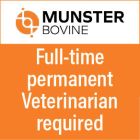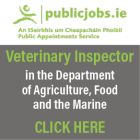Inducing timed ovulation in the mare
Susan Salter BSc Hons BVM&S MRCVS and Jonathon Pycock BVetMed PhD DESM MRCVS compare and contrast various ovulating agents used to induce ovulation in mares at breeding, highlighting the advantages and disadvantages, efficacy and welfare implications associated with each
Weatherbys documented 14,747 active thoroughbred broodmares in Ireland in 2019, almost twice as many as the UK which recorded 8,571. Ireland is the third biggest producer of thoroughbreds in the world after Australia and the USA.1
In addition, it is estimated that there are around 15,000 active breeders in the sport horse sector.2 In order to maximise the efficiency of breeding, it is essential that timing of ovulation can be manipulated effectively. It is also imperative that attempts to manipulate timing of ovulation are not associated with subsequent delays in return to oestrus. The current Covid-19 crisis presents additional challenges and pressures of balancing the economic imperative to continue equine breeding with the public health requirement to minimise human contact and observe social distancing guidelines. Any measures that improve the efficiency of the breeding process have the dual benefit of improving economic efficiency and safeguarding public health. Presently in Ireland, there are two agents that are registered for the induction of ovulation: human chorionic gonadotrophin (hCG) and the deslorelin acetate implant.
Human chorionic gonadotrophin
HCG is registered as Chorulon and is administered by intravenous or intramuscular injection. Each vial contains 1,500IU of a white crystalline powder which is reconstituted for injection and administered as a dose of 1,500-3,000IU (one to two vials). It is relatively inexpensive but has been largely superseded by deslorelin.
HCG will induce ovulation approximately 36 hours after administration when given to cycling mares in oestrus in the presence of at least a 35mm follicle, however ovulation can take up to 48 hours. This variability in timing of ovulation makes it harder to estimate the optimal time for artificial insemination, particularly with frozen semen, and often results in more frequent examinations. Non-response to hCG is common and warrants repeat induction of ovulation and re-breeding. This hinders optimum management of busy thoroughbred stallions.
With repeated use of hCG, there is a risk of anti-hCG antibody production and an associated reduction in efficacy of hCG in inducing ovulation. McCue et al (2004) investigated and showed that an initial ovulation rate of 68.3% within 48 hours reduced to 51.9% and 48.8% when hCG was used on subsequent cycles. They also showed that younger mares were more likely to ovulate within 48 hours than older mares when given hCG. Repeated use of hCG is, therefore, associated with decreased reliability in inducing timed ovulation and efficacy declines significantly with increased mare age making it unreliable for use in older mares.3 In Ireland, hCG is still used since the deslorelin implant has labour, cost, welfare and safety implications.
Deslorelin acetate – the implant and the injectable
Deslorelin is a gonadotrophin releasing hormone (GnRH) receptor agonist. In either carrier form, it is a more reliable ovulating agent than hCG with ovulation occurring at approximately 40 hours post-administration. Comparisons between deslorelin and hCG have repeatedly indicated higher ovulation rates with deslorelin; for example, Gomes et al reported ovulation rates of 78.6% vs 50% in transitional mares and 68.8% vs 60% in mares which were cycling.4 Samper et al. showed that 83.3% of mares had ovulated with hCG while 100% ovulated with deslorelin by 48 hours.5
Deslorelin acetate is registered in Ireland as Ovuplant, an implant that contains 2.1mg of active drug within a 3.6mm carrier pellet designed to facilitate sustained release. It is registered for subcutaneous implantation via an 11-gauge needle into the lateral neck region midway between the head and the shoulder. The carrier will be absorbed and was not designed to be removed; however, the presence of the implant has been demonstrated to be associated with a delayed return to oestrus and a subsequent extended inter-ovulatory period. 6,7,8 Johnson et al (2002) demonstrated a reduction in plasma LH and FSH concentrations following deslorelin implant administration for up to seven days, which is associated with an increased inter-ovulatory interval.9 This typically undesirable consequence of the implant is sometimes used deliberately to suppress ovarian activity for several months in competition mares by administering two implants.10 Henderson et al (2012) showed that 60.8% of mares that received an implant (and remained barren on that cycle) had an inter-ovulatory interval of more than 22 days, compared to 30.4% in those mares who had the implant removed or received hCG instead of the implant.7 Data collected by the authors indicated that when the implant was left in situ, mares had an inter-ovulatory interval that was at least five days longer. This was in comparison to other cycles in the same mares during the same season both when the implant was removed post-ovulation or hCG was utilised as the ovulation induction agent (Salter, unpublished data).
To mitigate the negative effects of deslorelin implants on inter-ovulatory intervals, placement in the vulva and removal are recommended6, even though this constitutes off-label use. Implants are placed, via the 11-gauge needle that is provided, into the sensitive vulval mucosa to enable removal. Removal of an implant necessitates a small but invasive surgical procedure (which some vets perform with, and others without, local anaesthetic). In the authors’ experience, both administration and removal of the implant can be painful, especially in maidens who have healthy, sensitive vulval mucosa. Repeated administration and removal of the implant can also disrupt the barrier offered by an undisturbed functional vulval seal. Repeated vulval implantation, therefore, raises ethical questions and can also be unsafe for the attending veterinary surgeon if mares are not appropriately restrained within stocks. When placed into the lateral neck region, sub-cutaneous reactions occurred in 65% of cases in an Australian study.11 Swelling, fibrosis and an increase in sensitivity to touch at the site of implantation are recognised complications of using the implant (Ovuplant; product guide). Due to the welfare implications and the availability of efficacious alternatives, the deslorelin implant has been withdrawn from the market in the US and is no longer permitted in some European countries.8
In Australia and the US, injectable deslorelin products are registered and available. In the UK, there is no registered product, however, an extemporaneous preparation is manufactured under license. Injectable deslorelin is an aqueous liquid which is easily administered via a small 21-gauge needle intramuscularly, therefore overcoming welfare issues associated with the implant. Normal inter-ovulatory intervals are reported following the administration of injectable deslorelin12, eliminating the concerns associated with the use of the implant subcutaneously or necessitating its removal from the vulval mucosa. No injection site reactions were reported in association with the use of the deslorelin injection in a UK study.12
Covid-19
In light of the Covid-19 pandemic, hCG and the deslorelin implants are not advantageous. Each modality often requires more veterinary intervention including more ultrasonography. This is especially true on artificial breeding programmes when hCG is used and the use of the implant necessitates placement into the vulval mucosa and removal by a veterinary surgeon. This results in less social distancing, more human interaction and potential for Covid-19 transmission. These factors should be considered, especially in the current climate.
Conclusion
HCG is easy to administer and is safe, having no significant adverse effects on welfare. However, it is a less reliable option than other ovulating agents, may adversely impact the efficiency of subsequent breeding management and has reduced efficacy in older mares and mares who have had multiple hCG doses. Deslorelin, either as an implant or as an injection is more reliable and more effective. To avoid the risk of increased inter-ovulatory intervals and oestrous suppression, the implant must be used in an unauthorised manner which can be associated with pain and a compromise to the animal’s welfare especially in light of reasonable alternatives. Injectable deslorelin overcomes the aforementioned complications while offering excellent efficacy but is not yet available in Ireland. Whether this product can be made available via special request remains unknown. However, altered practice conditions (due to the Covid-19 pandemic) and welfare issues may be additional reasons to justify a successful request.
-
Weatherbys fact book 2019.
-
Corbally AF, Fahey AG. The contribution of the sports horse industry to the Irish economy 2017. http://www.horsesportireland.ie/wp-content/uploads/2017/10/The-Contribution-of-the-Sport-Horse-Industry-to-the-Irish-Economy-2017-Corbally-Fahey-2017.pdf
-
McCue P, Hudson J, Bruemmer J, Squires E. Efficacy of hCG at inducing ovulation: a new look at an old issue. Proceedings of the 50th annual convention of the American Association of Equine Practitioners 510-513 (2004).
-
Gomes RG, Oliviera RL, Castro CG. Effect of Deslorelin and/or Human Chorionic Gonadotropin on Inducing Ovulation in Mares During the Transition Period Versus Ovulatory Season. J Equine Vet Sci 34, 1140-1142 (2014).
-
Samper JC, Jensen S, Sergeant J, Estrada A. Timing of induction of ovulation in mares treated with Ovuplant or Chorulon. J Equine Vet Sci 22, 320-323 (2002).
-
McCue P, Farquhar V, Carnevale E, Squires E. Removal of deslorelin (OvuplantTM) implant 48h after administration results in normal interovulatory intervals in mares. Theriogenology 58, 865-870 (2002).
-
Henderson I, Brama P, Osborne M & Beltman M. Interovulatory intervals in mares receiving deslorelin implants in Ireland (2009 to 2010). Vet Rec 170, 541-541 (2012).
-
Cuervo-Arango J, Newcombe J. What are the options for induction of ovulation in the mare in Europe? Buserelin as an alternative to hCG. J Equine Vet Sci 51 8-17 (2017).
-
Johnson CA, Thompson DL, Cartmill JA. Pituitary responsiveness to GnRH in mares following Deslorelin acetate implantation to hasten ovulation. J Anim Sci 80, 2681-2687 (2002).
-
Johnson CA, McMeen SL, Thompson DLJ. Effects of multiple GnRH analogue (deslorelin acetate) implants on cyclic mares. Theriogenology 58 469-471 (2002).
-
Finan SA, Lamkin EL, McKinnon AO. Comparative efficacy of Biorelease Deslorelin injection for induction of ovulation in oestrous mares; a field study. Aust Vet J 94(9) 338-340 (2016).
-
Serrano Y, Crabtree J. Efficacy of deslorelin acetate injection in mares. Equine Vet J S53, 7-8 (2019).








